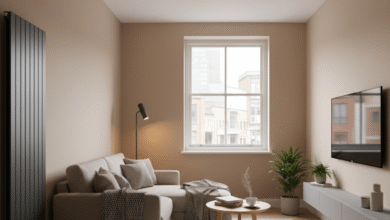Reflexology Foot Chart: A Complete Guide to Healing Through Your Feet

In today’s fast-paced world, more people are turning to natural healing methods to reduce stress and restore their health. One such method is foot reflexology, an ancient practice that links specific zones on the feet to organs and systems within the body. Central to this practice is the reflexology foot chart, a guide that maps the foot’s pressure points and shows how each connects to different bodily functions. By learning how to use this chart, you can tap into the body’s energy flow, support healing, and promote overall wellness.
Many holistic health practitioners use the reflexology foot chart to diagnose imbalances, reduce tension, and treat emotional or physical discomfort. Whether you’re looking for stress relief, pain management, or simply want to improve your quality of life, this practice offers a non-invasive way to help the body restore its natural balance.
What Is Reflexology?
Reflexology is a therapeutic technique rooted in ancient Chinese and Egyptian medicine. It involves applying controlled pressure to specific areas on the feet, hands, or ears to affect corresponding parts of the body. The idea is that the body contains energy zones and pathways, and when these become blocked or imbalanced, physical or emotional symptoms arise. Reflexology helps to unblock these paths and allow energy to flow freely again.
Foot reflexology focuses specifically on the feet. It’s based on the belief that each part of the foot reflects a part of the body, such as the liver, lungs, spine, or even the brain. When pressure is applied to these points, it can stimulate nerves, improve circulation, and promote self-healing. Unlike massage, which targets muscles and soft tissue, reflexology targets nerve pathways and energy channels.
What Is a Reflexology Foot Chart?
A reflexology foot chart is a diagram that shows the locations of pressure points on the foot and the organs or systems they correspond to. These charts are typically color-coded and labeled to make it easy to identify which parts of the foot relate to which body parts. For instance, the toes often represent the head and neck area, while the arch of the foot connects to the digestive organs.
Practitioners rely on this chart to determine where to focus pressure during a reflexology session. For people practicing self-care at home, the reflexology foot chart acts as a visual roadmap for targeted stimulation. It also provides insights into how pain or tension in a certain foot area could indicate stress or imbalance elsewhere in the body.
Understanding the Zones in a Reflexology Foot Chart
Left and Right Foot Mapping
Each foot serves as a mirror image of the body’s left and right sides. The left foot typically reflects the organs and body parts on the left side, such as the heart and spleen. The right foot represents the liver, gallbladder, and other organs found on the right side. Understanding this distinction helps you better navigate the reflexology foot chart.
By targeting the appropriate foot, you can more accurately focus on the area that needs attention. For example, if you’re experiencing digestive issues and want to stimulate the liver, you would focus on the right foot. If you’re experiencing discomfort in the heart or lungs, the left foot would be the better choice.
Key Zones of the Feet
The toes are associated with the brain, eyes, sinuses, and neck. Pressure applied to these areas can help with mental clarity, headaches, and sinus congestion. The ball of the foot corresponds to the lungs, chest, and heart. Massaging this area can improve breathing and support cardiovascular health.
The arch is connected to major digestive organs such as the stomach, pancreas, kidneys, and small intestines. Stimulating this area is believed to ease bloating, reduce indigestion, and encourage better nutrient absorption. Lastly, the heel and ankle area is associated with the reproductive organs, the sciatic nerve, and the lower back. These zones can be worked on to relieve menstrual discomfort, sciatica, or lumbar pain.
How to Read a Reflexology Foot Chart
To effectively use a reflexology foot chart, start by familiarizing yourself with the basic structure. Charts are usually divided into sections that relate to different body systems. Begin by identifying the concern you want to address, then locate the corresponding area on the chart.
For example, if you’re experiencing stress or trouble sleeping, you might want to stimulate the solar plexus area, which is typically located in the center of the foot. If you’re targeting hormonal imbalances, you’ll focus near the heel. Reading the chart becomes intuitive over time, especially with consistent practice.
Charts also vary slightly depending on the source or the reflexologist’s interpretation. Some charts include detailed sections like lymphatic drainage zones or energy meridians, while others offer a simpler layout. Choose a chart that fits your level of understanding and your wellness goals.
Benefits of Using a Reflexology Foot Chart
The benefits of using a reflexology foot chart go beyond physical healing. One major advantage is stress reduction. Applying pressure to foot zones can activate the parasympathetic nervous system, which helps the body relax and recover. This can lead to better sleep, improved mood, and increased focus.
Reflexology also supports better circulation by stimulating blood flow to organs and tissues. This helps nourish the body with oxygen and nutrients while supporting detoxification. Another benefit is pain relief. Reflexology may help reduce symptoms associated with headaches, migraines, menstrual cramps, and even arthritis.
In addition, people often report better digestion, enhanced immune function, and relief from respiratory conditions. Because reflexology addresses the body as a whole, it encourages overall harmony and balance, making it a versatile wellness tool.
DIY Reflexology: Using a Foot Chart at Home
Practicing reflexology at home is simple with the help of a reflexology foot chart. Start by soaking your feet in warm water with Epsom salts to relax the muscles. Once dry, apply a natural oil or lotion to reduce friction during the massage. Refer to your chart to locate the pressure point that relates to your concern.
Use your thumb or a massage tool to apply steady, gentle pressure in circular motions. Work on each point for 30 to 60 seconds before moving to the next. Pay attention to areas that feel tender or sensitive—these may be zones that need more care.
Regular self-reflexology can become a powerful part of your daily wellness routine. It requires no special equipment, just a quiet space and your attention. Over time, you’ll become more attuned to your body and its signals.
Tools That Can Help Enhance Reflexology Practice
To elevate your reflexology practice, various tools can complement the use of a reflexology foot chart. Reflexology socks are printed with foot maps, making it easy to locate pressure points while massaging. Wooden foot rollers help target the entire sole evenly with minimal effort.
Essential oils like lavender, eucalyptus, or tea tree oil can also enhance relaxation and boost the experience. You can apply these directly to pressure points or diffuse them during a session. Electric foot massagers, acupressure mats, and massage balls are also helpful for deeper stimulation and convenience.
Incorporating these tools can make your routine more effective and enjoyable, especially if you’re new to reflexology or seeking more consistent results.
Common Myths and Misconceptions About Reflexology
Some people hesitate to try reflexology due to common myths. One major misconception is that reflexology is just a glorified foot massage. In truth, reflexology uses specific pressure techniques aimed at energy channels and nerve endings, not just muscles or skin.
Another myth is that the effects are immediate. While some people do feel relief after a single session, others may need multiple treatments to see lasting results. Like other holistic therapies, reflexology works best as part of a consistent self-care routine.
There’s also the belief that reflexology can cure diseases. While reflexology supports the body’s natural healing, it should not replace medical treatment. Instead, it works best when integrated with traditional healthcare practices to improve quality of life and reduce symptoms.
When to See a Professional Reflexologist
While self-care is valuable, professional reflexologists offer deeper insights and techniques. You might consider seeing a certified practitioner if you’re dealing with ongoing health issues like chronic pain, insomnia, or hormonal imbalances. Reflexologists can also detect subtle changes in your foot texture, color, or sensitivity that might indicate internal imbalance.
During a professional session, you’ll receive personalized care based on your health history and concerns. Reflexologists often use advanced techniques and tools that go beyond the basics. For those serious about using reflexology for long-term wellness, professional guidance can be transformative.
Frequently Asked Questions (FAQs)
What can a reflexologist tell from your feet?
A reflexologist may notice tender spots, lumps, or irregular textures on specific foot zones, which may correspond to stress or imbalance in related organs. For example, a sore point on the heel might indicate reproductive tension or lower back issues. The reflexology foot chart helps them interpret these signs more precisely.
What is foot reflexology, and its benefits?
Foot reflexology is a therapy that involves applying pressure to foot zones that correspond to body organs. Its benefits include better circulation, reduced anxiety, improved digestion, enhanced immunity, and relief from chronic pain. The reflexology foot chart guides practitioners to the correct zones for optimal results.
What does it mean if a reflexology point hurts?
Pain or sensitivity in a reflexology point may indicate congestion or an energy blockage in the corresponding organ. It’s not always a sign of disease, but it can indicate the body’s need for care in that area. A sore spot near the foot’s arch, for example, may reflect digestive tension or kidney strain.
Does foot reflexology work?
Many people find reflexology to be highly effective for reducing symptoms of stress, fatigue, and chronic pain. Though results vary, numerous studies and testimonials support its ability to promote balance and healing. It works best when used regularly alongside a healthy lifestyle.
What are the side effects of reflexology?
Reflexology is safe for most people, but some may experience temporary side effects like dizziness, fatigue, or emotional release after a session. These reactions are typically short-lived and seen as signs of detoxification or energetic realignment. Those with medical conditions should consult a professional before starting reflexology.
Conclusion
The reflexology foot chart is a simple yet powerful tool that unlocks the connection between your feet and the rest of your body. Whether you’re addressing physical discomfort, emotional stress, or simply seeking to enhance your overall energy flow, this chart provides guidance and healing through self-care.
By learning the zones and practicing regularly, you can take an active role in your wellness journey. Reflexology invites you to slow down, listen to your body, and support your health naturally and intuitively. With the right knowledge, tools, and intention, healing is quite literally at your feet.




